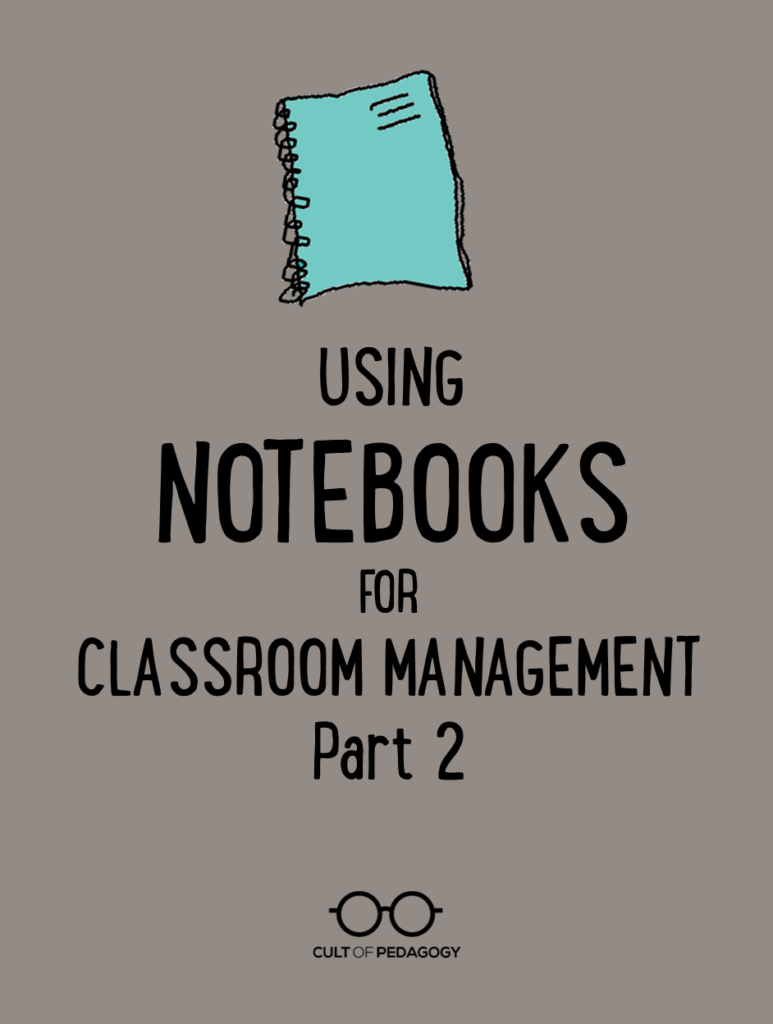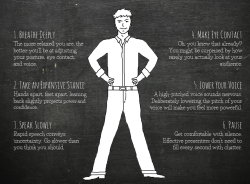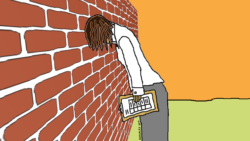
Earlier this month, we looked at a simple way to use a notebook to settle an out-of-control classroom…or an out-of-control teacher.
Now here’s part 2, where the notebook is elevated to a more systematic, proactive tool for recording student behavior. Using this method should cut down your office referrals dramatically, putting classroom control back in your hands.
There’s so much more where this came from.
Join my mailing list and get a weekly email from me that will help you crush it in the classroom. As a welcome goodie bag, you’ll get access to my Members-Only Library of free downloads, which includes my e-booklet, 20 Ways to Cut Your Grading Time in Half. Come on in!
Join my mailing list and get a weekly email from me that will help you crush it in the classroom. As a welcome goodie bag, you’ll get access to my Members-Only Library of free downloads, which includes my e-booklet, 20 Ways to Cut Your Grading Time in Half. Come on in!





I teach 8th grade English and am looking for tips on classroom management and making my classroom more engaging.
Hi Diana,
Thanks for writing in. I was an 8th grade ELA teacher too, so I know just what you’re dealing with! Here are some recommendations:
For starters, I would suggest you read an article I wrote last year for MiddleWeb, 10 Ways to Sabotage Your Classroom Management. Although the title suggest this is only about what NOT to do, the piece also tells you what you should be doing instead and is a good overview of some basic tenets of classroom management.
Another good piece to read would be 8 Things I Know for Sure About Middle School Kids. Although this is not classroom management-specific, it covers some things that would be good reminders when working with this age group.
Finally, for a more engaging classroom (which is a big key to improving classroom management), take a look at some of my instructional strategies videos. Each one demonstrates a technique that gets students more actively engaged in their learning.
If you have more specific questions or concerns, please let me know. Good to hear from you.
Thank you! This is very helpful!
This is such a great idea and it is charging me back up towards using some behavior logs I’ve wanted to use. This is a great resource to use as there is no way to remember what a kid did last fall in May. I love the fact that you mention that their decisions in the classroom show their character. Sometimes they forget that. I also want to use this as a push for them to reach out to me on those bad days so we can work together on a solution for tardiness or missing assignments. Thank you!
Glad you found this post to be helpful, Lisa!
Best. Ever. Thanks for this suggestion! I’ve implemented this idea haphazardly in the past, without much idea of organising it for an actual classroom management tool. In my country, where documentation is the most important step in behaviour management, this tool is simply invaluable.
I may be off to the shops now to buy a few new notebooks. Talk about a hardship…
Wonderful! Come back and tell me how it goes.
Thanks so much! I love your perspective on developing a track record with the student and teaching the student the importance of that! I have done similar things by making notes in the online gradebook :).
Thank you. Off to Target to get ten notebooks for each grade I teach! This will be a great reflection tool as well. Thank you for helping with middle school age! It has been my weakness but your articles and videos are giving me confidence and I am looking forward to teaching this age group, even the school play that I was awarded to direct :)!
I’m so excited for you! Come back and tell me how it’s going!
Do you think this would be effective and realistic for a first grade teacher to do?
Hi Kirsten,
That’s a good question. My only experience with first graders was when my own kids were that age; my teaching was in middle school and up. I did try a similar system with my kids for a while when they were around that age. I remember them being very much interested in the notebook and what I was writing down. At that age, they were very responsive to rule-following, consequences, and rewards, and would almost do things specifically to see if I was going to record them in the book. I don’t know how well they could conceptualize the whole “patterns of behavior over the long term” idea, but they definitely wanted good things written about them. I don’t know. I’d say give it a try and see what happens.
I use the same type of system but with an app called Class Dojo. I teach Spanish, so I use it to monitor participation, but also things like tardies and negative attitude. The students know anytime I’m holding my iPad that I monitoring them. It really helps with having to participate more in a positive way and to curb their negative behavior . I teach high school .
I love this! I’m a first year teacher & have ONE class at the end of the day that tests my sanity. They are tired, I’m tired, lots of other things going on that causes a not-so-positive classroom experience.
I had a coteacher suggest kind of this same thing YESTERDAY! But- she uses address label stickers to document on 5-7 students a period (randomly chosen or those that NEED it that day SPED/ELL/those that might need documentation for testing) so that at the end of the class/day it would be easy to afix to each students page!
I made my binders last night and look forward to seeing how my stude ts respond to this! I’ll definitely keep a blank one for Part 1 trick too! Never too many options to help everyone stay sane!
Thank you for your wonderful work!!
HI Jennifer,
Thanks so much for the great strategy. I am wondering, would this system work in a class that I teach only once a week? like we barely see each other and it takes a long time to know and connect with each other.
Thanks in advance.
Warm regards,
Noora
Hi Noora,
Not knowing your class, it’s hard to know if this management system would best meet your needs, but I don’t see why it couldn’t work – give it a try and see what happens. You obviously wouldn’t collect as much ongoing data as you would if you saw the kids daily, but when you notice something particlular that stands out, jot it down and then you’ll have that information if you ever need it. You mentioned it can take a really long time to get to know and connect with your kids — this post might offer some ways to do that more quickly. A 4-Part System for Getting to Know Your Students
Hi – this is similar to something I started doing this year. I actually just have one page per class (I teach 10), with a list of names and 6 columns (one for each half term) and I have a shorthand of +- (good or poor behaviour) h/w (missing homework), l (for late) etc. Having it on one page makes it easy to record lots of kids st the same time.
It really helps me spot patterns of behaviour and give me confidence that I have evidence of what I am telling the kids and their parents. I like the idea of expanding it to include more specific positives.
Thank you so much for this tip! I love both videos with this strategy. I read your article about starting your first teaching job in the middle of the year, and it’s my liiifeeee. My degree is in Secondary Education (English), but I am currently teaching 6th grade science and social studies. I’m just trying to take it one day at a time. Thanks for the encouragement!
I’m so glad this stuff has helped in some way, Emily! Hope your year is going great!
Thank you so much for these videos. I just started teaching 8th grade ELA today, in February, with zero classroom experience and virtually no formal teaching education. While I think I held my own for the most part with proximity/teacher voice/teacher face, I was so mentally and physically exhausted by the end of the day I wanted to cry. I loved this video (and the mid year start teacher guide) a ton and plan to watch more and check out your other resources.
Rachael, I’m so glad to know this helped! The first year is crazy. I don’t know if you’ve seen this post about starting halfway through the school year, but it will definitely help!
What do you think of implementing this on high schoolers? Specifically 10th graders?
Hi Daniel–I work for Cult of Pedagogy and ran this question by Jenn. She used it with 7th graders and college students, so she feels using it with 10th graders would work just as well. Good luck!
I’m going to start implementing this in my 8th grade classes! Do you have any suggestions for students who simply don’t care about how they’re acting in class? I love this idea but I’m afraid my students won’t be motivated to behave well even though they know what I’m doing with the notebook.
Hi Alyssa,
I think the reason there are so many management options out there, is because there’s not just one that all kids respond to best. Kids who kinda mess up, but fix it pretty quickly, are typically coming from a different place than kids who are consistently unmotivated and appear to not care. It’s possible that the notebook may not be the thing that turns them around; more than likely there’s other stuff going on, especially for 8th graders.
Here are a few resources you may want to check out:
5 Questions to Ask Yourself About Your Unmotivated Students
8 Things I Know for Sure About (Most) Middle School Kids
Are You Sabotaging Your Classroom Management
See if any of these offer ideas that can get to the root at what might be going on with the kids you’re concerned about.
Hi Diana,
In our school we’re required to make anecdotal records which is templated and I find it hard for teachers to fill out. I can’t wait to share it with them. By the way, I am from Bacoor City, Philippines. Thanks for this.
Hello Jennifer,
I am a “second-year” ESL teacher in Quebec and find your website very inspiring. Thank you for all the valuable information.
This year, I will be teaching sec 5 (16-17 y.o.) future IT guys; so, boys that are very into computers, programming, gaming etc. I was wondering if you have any experience that the notebook strategy works also for teenagers? As you said in your video, it’s to recording behavior patterns but do these teenagers care that something about them is recorded without and “further purpose”? Meaning, you will show it to the parents, to the principal etc.
Thank you for your response,
Andrea
Hi Andrea,
Jenn has used this strategy at the college level and thinks it would work for high schoolers too. If you find that students aren’t responding as expected (without some sort of consequence), there are some other articles suggested throughout the comments that you may want to take a look at.
One of the things my teachers at college used (and I like it with smaller classes) was having everyone’s name on a 3×5 and taped to a clipboard. Smaller space to write, but also a little more portable. Then when she filled up a card she put them in a file box and started another one. For her the system works well on a large scale, but for me it only works in smaller scales. But I’m still using it. Same idea, different format.
Great resources. I believe whatever you can use to personalize getting to know students they will appreciate
I really appreciate you sharing this method. I teach 3rd grade and am looking forward to trying this as a management technique for my classroom. Thank you.
Glad you liked it Ashley!
I am a new teacher fixing to start in 3rd grade classroom in February… I am interested in how your 3rd graders responded and how this is working for you!?!
Hi Jennifer:
That is an excellent method you have come up with. This notebook is going to help in many ways! Can’t wait to try it with my students. Thank you! By the way, I teach Class7 students math 3 times a week.
Glad you found it helpful!